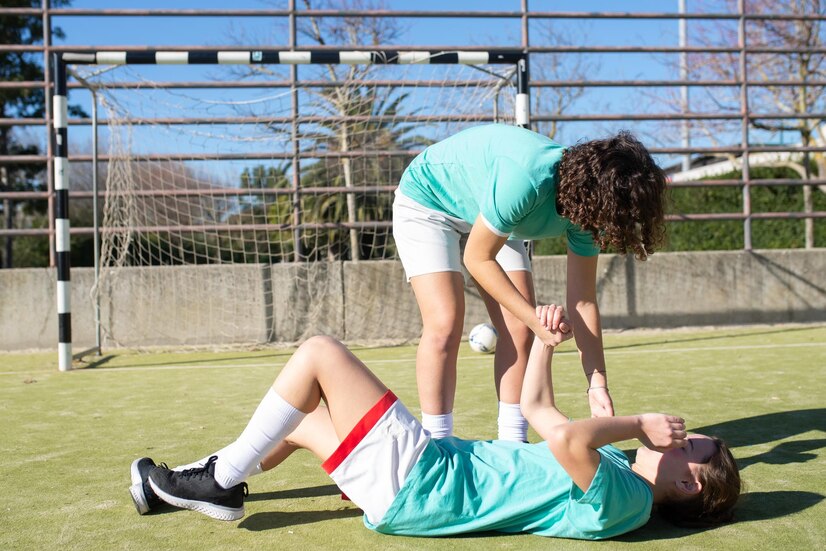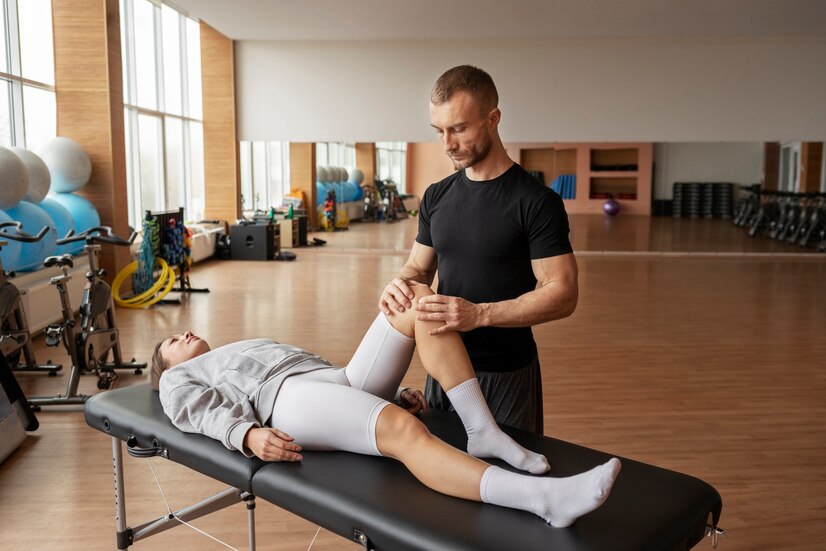Whether you’re a professional athlete or someone who enjoys a game of basketball on the weekends, sports injuries can be a significant setback. But here’s the silver lining – injuries, if managed correctly, can often lead to a stronger, more resilient body.
In this comprehensive guide, we will walk through the most effective strategies and techniques for rehabilitation after a sports injury. From the initial diagnosis and the R.I.C.E. principle to post-rehab training, this post will equip you with the knowledge and tools to bounce back stronger than before.
Understanding the Most Common Sports Injuries
Knowledge is the First Step to Prevention
Before we can talk about rehabilitation, it’s vital to understand the injuries you’re most likely to encounter. From sprains and strains to fractures and tears, each has its own set of symptoms, causes, and treatments. Common sports injuries include:
- Sprains
Sprains are ligament injuries, often resulting from a fall or sudden twist. They range from mild (slight stretching or tearing) to severe (a complete tear).
- Strains
Muscles or tendons that are overstretched or torn result in strains. Like sprains, strains have varying degrees of severity and can cause significant pain and weakness in the affected area.
- Fractures
Bone fractures can be caused by a single, severe impact (acute fracture) or from repetitive stress (stress fracture).
- Tendonitis
Tendonitis is the inflammation or irritation of a tendon, usually the result of overuse during a sporting activity.
The Initial Phase of Recovery
Diagnosis and Treatment
Prompt and Accurate Diagnosis
Seeking immediate medical attention is crucial after experiencing a sports injury. Having a clear diagnosis sets the foundation for your recovery plan. Learn more from the Online Learning Platform for Gestalt Therapy.
The R.I.C.E. Principle
Rest, Ice, Compression, and Elevation – these four components work together to manage pain and promote healing in the early stages of an injury.
Pain Management
Over-the-counter pain relievers, prescribed medication, and localized anesthetics can help control pain during this phase.

The Role of Rehabilitation Specialists
Physicians
Your first point of contact diagnoses the injury and will refer you to relevant specialists if necessary.
Physical Therapists (PTs)
P.T.s help restore movement and function and manage and prevent pain through therapeutic exercises.
Athletic Trainers
They work with athletes to prevent and treat injuries, usually under the direction of a physician.
The Rehabilitation Process
Setting Realistic Recovery Goals
Rehabilitation, depending on the severity, can last from weeks to several months. Setting achievable goals with your healthcare team keeps your recovery on track.
Restoring Range of Motion and Strength
Following the R.I.C.E. principles, your focus moves to improving flexibility to avoid stiffness and rebuilding strength to support the injured area.
Flexibility Exercises
These focus on the gradual stretching of the muscles, tendons, and ligaments to restore and improve the range of motion.
Strengthening Exercises
Progressive resistance exercises help rebuild muscle strength, which is crucial for stability and preventing future injuries.
Proprioception Training
This type of exercise improves your body’s ability to know where a joint is in space, which is important for balance and preventing re-injury.
Cardiovascular Exercises
Engaging in low-impact activities early in your rehabilitation can improve overall general fitness without putting excessive strain on the injury.
Nutritional Strategies for Healing
Eating for Recovery
Nutrition plays a significant role in the healing process. A diet rich in protein, vitamins, and minerals can help repair tissues and boost your body’s immune system.
Hydration
Staying hydrated is essential for all bodily functions, including the repair of injured tissues.
Supplements
When diet alone isn’t enough, supplements such as vitamin D, calcium, and omega-3 fatty acids can aid in recovery.
Psychological Rehabilitation
Dealing with the Mental Aspect
Sports injuries often come with psychological challenges such as depression, anxiety, and fear of re-injury.
Coping Mechanisms
Learning effective coping strategies can be as important as physical rehabilitation in the recovery process.
Mental Skills Training
Mental skills training can aid in returning to pre-injury levels of performance or better.
Returning to Play
Knowing When You’re Ready
It’s crucial to take your time with the return to your sport. Your healthcare team will help determine when you’re physically and mentally prepared to play again.
Post-Rehab Training
Gradually getting back to your full training program can minimize the risk of re-injury. Incrementally increase the intensity and duration of your activities over weeks.
Support and Follow-Up
Post-rehab training should be supplemented with regular check-ups to ensure the injury site is healing as expected.
Long-Term Injury Prevention Strategies
Lessons Learned
Each injury carries with it a valuable lesson. It’s important to identify and address the factors that led to the injury to prevent a future occurrence.
Equipment and Technique
Using appropriate sports gear and maintaining proper form and technique can significantly reduce the risk of injuries.
Cross-Training
Incorporating a variety of exercises into your training regimen strengthens different muscle groups, reduces the risk of overuse injuries, and improves overall fitness.
Listen to Your Body
Pain is your body’s way of signaling that something isn’t right. Ignoring it can lead to further injury.
Conclusion
Sports injuries are an inevitable part of an active lifestyle, but they do not have to be the end of your athletic career. Rehabilitation is a process that, when followed diligently, leads to a complete recovery and, often, a return to sports with renewed vigor.
Investing in your recovery is investing in your future as an athlete, and with this ultimate guide, you are now equipped to handle sports injuries like a pro. Remember, patience and persistence are key, and each step you take in the recovery process brings you closer to achieving your athletic goals once again.




